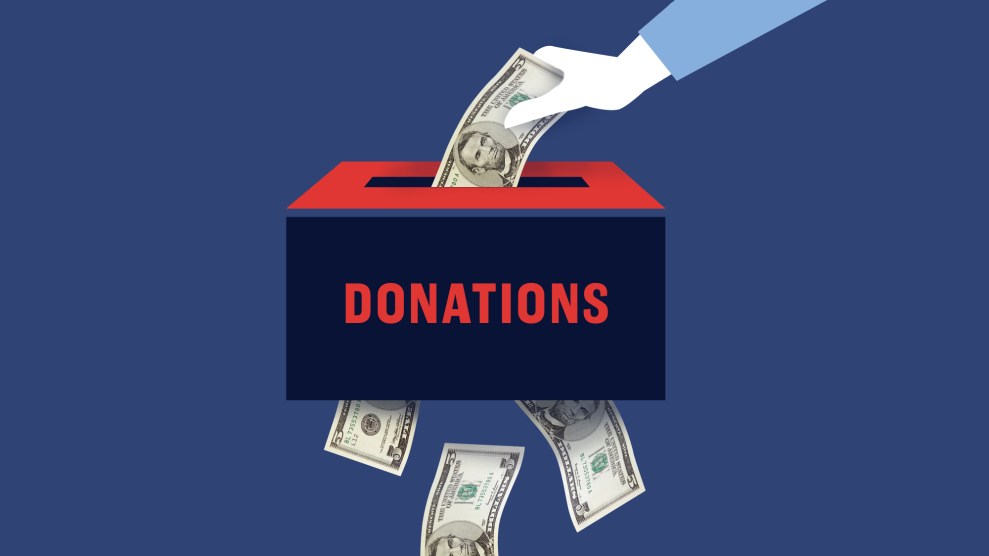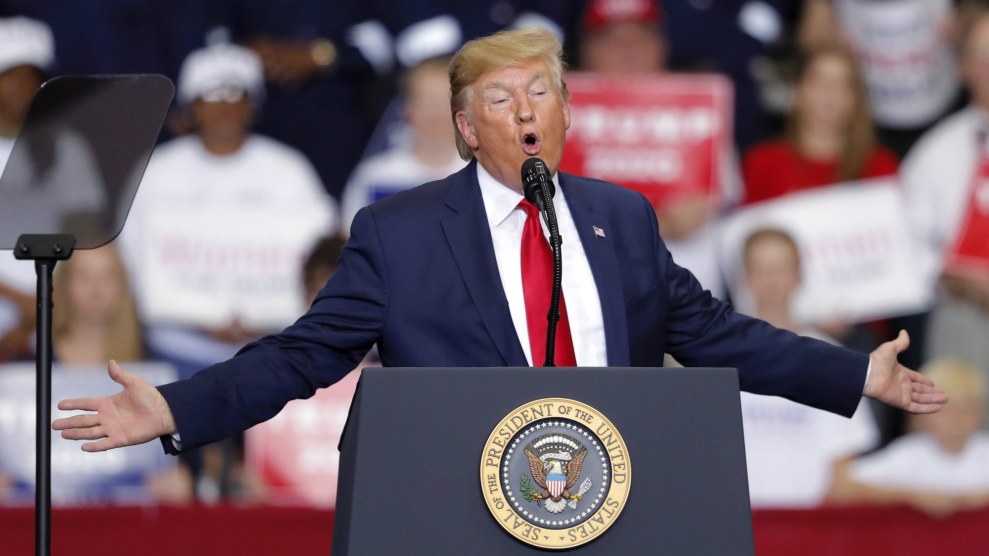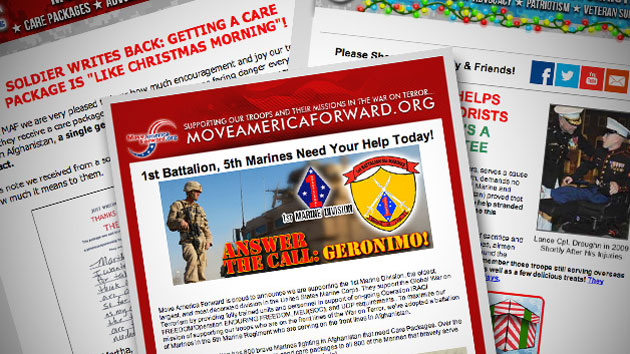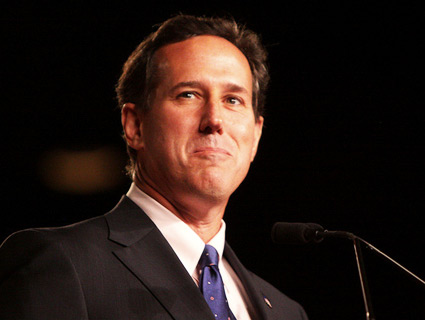
Mother Jones illustration; Getty
In the summer of 2014, the Disabled Veterans National Foundation was in dire straits. Only seven years after setting up shop, DVNF had raised more money than all but a handful of other veterans groups, but only 15 percent of its revenue in that time directly reached veterans. The rest was owed, almost entirely, to a single contractor—an outcome that had already sparked a congressional probe and investigations by Florida and New York’s top prosecutors.
Like other groups, DVNF used sappy solicitations to raise money, often centered around veterans with heartbreaking stories of injuries suffered in combat. But many of these characters were completely made up. By the time New York authorities announced a settlement with DVNF that summer, the charity was spending 90 cents of every dollar it raised to pay Quadriga Art, the direct mail firm that coordinated its fundraising campaign, and Convergence Direct Marketing, a firm that designed the direct-mail solicitations. As part of the agreement, Quadriga was ordered to forgive DVNF’s massive debt and pay the state nearly $10 million, the “largest amount of financial relief ever obtained in the US for deceptive charitable fundraising,” according to the New York attorney general’s office.
The AG’s punishment laid most of the blame on Quadriga for misleading an “unsophisticated start-up charity” like DVNF. With the settlement, DVNF had an “opportunity to make a fresh start.”
That’s not what happened. Instead of cutting ties with Quadriga, DVNF has continued fundraising at near record levels while using most of its revenue to offset exorbitant direct mail costs. While the settlement barred DVNF from resuming the same fundraising arrangement with Quadriga or any of its “successors” for three years, it did not say anything about restricting DVNF’s fundraising costs. And it still permitted the charity to work with Quadriga in a limited capacity if the firm won a “competitive bidding process.”
Months after the settlement, Quadriga signed a new contract with DVNF and quietly reorganized under a different name. Now known as Innovairre Communications, the firm received more than $101 million from DVNF between 2014 and 2018, the most recent year for which the charity’s financials are available. Over that period, only 11 percent of the money raised by DVNF went to goods and services for veterans, an even more dismal result than the one preceding the settlement.
To industry experts like Daniel Borochoff, founder of nonprofit watchdog CharityWatch, that sounds awfully similar to the setup DVNF had in the past, when most donations were used to offset its high fundraising costs. Since his group began monitoring DVNF in 2010, the charity has received an F every year, the lowest possible rating, because so little of the charity’s money directly goes to veterans. It’s still an F-rated charity today.
“Nothing has changed,” Borochoff told me. “Based on the results, they’ve gone back to what they’ve been doing in the past that got them into trouble.”
Before it rocketed to infamy, DVNF started as an experiment. Five Department of Veterans Affairs staffers in Louisiana had come together in 2005 to form a nonprofit mostly known for a small conference it organized each year. That organization, the National Association of State Women Veterans Coordinators, had humble ambitions before its founders came into contact with Larry Rivers, a retired Marine officer with a wealth of contacts within the veterans charity movement. He connected them to Brick Mill Studios, a subsidiary of the firm that owned Quadriga, in 2007 and eventually the founders were pitched on setting up a nationwide, direct mail campaign to raise money. To test-run the venture, the founders set up another nonprofit and named it the Disabled Veterans National Foundation.
Throughout this process, Rivers and Quadriga’s leaders neglected to disclose to DVNF’s founders a crucial conflict of interest underpinning the arrangement: Rivers was a paid sales agent for Quadriga, even while informally advising DVNF. Lacking relevant experience, DVNF founders signed off on a laughably expensive fundraising campaign whose scale took even them by surprise. One DVNF board member apparently thought it would only raise $50,000, according to a report compiled by the New York AG’s office. Within a year, DVNF was spending $15.6 million on fundraising to raise more than $10 million in revenue. By 2012, it had raised more than $21 million—and DVNF accrued $16.5 million in debt to its fundraising vendors.
Rivers pocketed millions in commissions from the arrangement while boosting his own influence within DVNF. His daughter Raegan was named DVNF’s chief administrative officer in March 2010 after a search process that included “no job announcement” for the position and zero interviews with any other candidates before her hire, the New York AG’s report found. (Larry and Raegan Rivers did not respond to repeated requests for comment.)
Two years later, reporters from CNN who had been investigating the charity’s finances discovered that DVNF had made a series of payments to an organization with a similar name, the Disabled Veterans Life Memorial Foundation. In early 2008, Memorial Foundation leaders realized that DVNF’s solicitations bore such a “striking resemblance” to their own mailings that it seemed their “proprietary information and intellectual property rights had been violated,” according to a letter from its executive director to a Florida state official looking into DVNF. As part of a settlement with the Memorial Foundation, DVNF agreed to pay the other charity $325,000 over three years, writing the installments off in its filings to the IRS as grants.
Attorneys general in California and New York opened investigations into Quadriga in response to CNN’s reporting. Congress announced its own probe into DVNF’s ties with the firm. DVNF’s problems were mounting even as Quadriga continued to wield a significant level of influence over the charity’s entire operation.
It was not entirely unusual that a new charity like DVNF invested so heavily in direct mail. Quadriga’s idea was to send its tug-at-your-heartstrings solicitations along with unsolicited and somewhat pricey gifts like tote bags, which lent DVNF credibility to unsuspecting donors who might have been unaware they were giving money to an organization that, at the time, had no employees, staff, or a phone line. For a new organization attempting to find its footing, the strategy of going all in on direct mail was ambitious and clearly lucrative. But many of the ads put out by DVNF blatantly misled donors.
Often these advertisements would falsely suggest the bulk of the donor’s money was going to disabled vets, though it mostly just filled Quadriga’s coffers. One of DVNF’s appeals for help described an Afghanistan veteran named Arnie who “suffered severe brain and leg injuries” after his vehicle was hit by a bomb. “We found Arnie through a shelter for homeless veterans,” the solicitation said. “Another urgently important gift of $10…$15…or $20 today can lay that blanket of security and concern over a hero like Arnie.” The New York AG’s office later determined that Arnie, and DVNF’s story of helping him, were made up.
“A lot of people are very sympathetic, so they give unknowingly,” Borochoff says. “A fundraiser can take advantage of that fact.”
The expensive campaign was DVNF’s way of making a name for itself in the increasingly competitive veterans charity space. “DVNF has found that including small items of minimal value in mailings are useful attention-getters,” charity spokesperson Timothy Gilles told me. “They add to the cost of the mailing but increase the net proceeds. Other organizations that do not use this technique would have lower costs.”
As a newer charity, DVNF is much more reliant on donations than its older, more established competitors, which tend to wield more influence with Congress and rely more on government grants. Veterans organizations founded after the September 11 attacks brought in 87 percent of their revenue from donations, compared to just 46 percent for older groups, according to a 2018 report from the Center for a New American Security. “The high cost of fundraising is a reality when you are a newer organization and particularly for an organization like DVNF that depends upon grassroots support,” DVNF chief executive Joseph VanFonda said as part of an unlisted YouTube video that the charity’s spokesperson sent me.
The Wounded Warrior Project, which was founded only four years before DVNF, raises hundreds of millions of dollars annually, but that is largely an outlier. Of the roughly 8,000 charities nationwide that cater to veterans, most receive less than $1 million a year in donations or grants. Only 16 percent raise more than $1 million per year, according to a 2015 report from GuideStar.
VanFonda, a retired Marine who had previously consulted for the group, took over as chief executive during talks about the settlement*. After the settlement, DVNF cut ties with four board members and was barred from working with Rivers or his daughter again, but wasted no time enlisting work from its favorite vendor.
Quadriga, which had battled a different investigation in California while negotiating with New York authorities, saw its reputation tarnished by the media attention lavished on DVNF and its other clients. Innovairre offered a fresh start, if only a cosmetic one. Mark Schulhof, Quadriga’s chief executive, started the transition in 2013 by hiring a new CEO for Innovairre, Don McKenzie, who consolidated Quadriga’s various subsidiaries into one company. In December 2014, McKenzie told the Chronicle of Philanthropy that Schulhof “is not part of the management team that runs Innovairre day to day but remains chief executive of RBS,” previously the parent company of Quadriga.
It’s not entirely clear how Schulhof’s role changed, but he remained a central part of Innovairre. In an article on its website from February 2018, Schulhof was described as Innovairre’s CEO. When I called the company’s main phone line last month, a staffer who picked up said Schulhof was still Innovairre’s chief executive. The company disputed this in an unattributed statement it sent me in response to several questions for this article. “Mark Schulhof is a member of the Board,” the statement said, adding that Dean Wimer, a former Innovairre executive who was appointed CEO of a packaging company in 2017, was now chief executive officer. Innovairre would not say when Wimer replaced Schulhof, only noting that he “has been a member of the senior leadership team and/or a board member since 2013.”
Despite the new name, Innovairre maintains many of the same contacts it did as Quadriga. McKenzie told the Chronicle in 2014 that Innovairre “no longer covers up-front costs for charities” and was “winding down the relationship” with DVNF, but the relationship never really ended. DVNF has paid either Quadriga or Innovairre every year for over a decade. Other former Quadriga clients have shown the same loyalty, including animal charity SPCA International and Veterans of Foreign Wars of the United States, one of the most prestigious veterans organizations in the country. Both groups were severely criticized for piling up huge fundraising costs with Quadriga or another of Schulhof’s firms, but chose to hire Innovairre anyway. As of 2018, they are both still working with Innovairre, but spending far less money to do so than DVNF. (Neither organization responded requests for comment.) That year, DVNF used 77 percent of its revenue to pay Innovairre, compared to only 35 percent for SPCA International and a negligible amount for VFW National, which spent 32 percent of its revenue on fundraising overall.
“DVNF continues to work with Innovairre because they have submitted the most satisfactory responses and cost-effective solutions in response to DVNF’s Requests for Proposal,” Gilles told me. The charity would not identify which vendors were considered, but said it solicited bids from six organizations in Canada, China, Singapore, and the United States and only received three completed proposals before awarding its most recent contract for direct mail services to Innovairre. The charity uses other vendors like Vera Data and Direct Mail Processors, Inc., but by far Innovairre remains its most expensive vendor and a key reason for its rising expenses. “The Foundation’s direct mail campaign costs is the major contributing factor to its increasing net asset (deficit),” a May 2018 audit concluded.
Gilles says that the New York attorney general’s office had conducted two compliance checks since the settlement and found no violation. The New York AG’s office did not respond to a request for comment.
The audit noted that DVNF had implemented a three-year plan to reduce its deficits, but progress has been slow. The charity ran a deficit of nearly $3 million in 2017, nearly double its deficit the prior year, finally earning a small profit in 2018. However, its total liabilities still exceed its total assets by $6.7 million.
The charity has professionalized its operation in other ways and, on its website, champions a series of grant programs to benefit homeless shelters and other veterans centers with cash or gifts. The report compiled by New York authorities had criticized DVNF’s gift “in-kind” (GIK) program in the past for overvaluing its gifts and supplying somewhat baffling items. In one example cited by CNN, DVNF shipped “11,520 bags of coconut M&M’s” to a small veterans charity in Birmingham, Alabama. Gilles told me that DVNF has replaced its policy for this program, now known as “Health and Comfort grants,” and assigned a committee of its governing board to oversee it. “DVNF staff visit approximately half of the GIK-related events every year to ensure compliance with the policy,” he said. “These measures have achieved the goal of the settlement ‘to increase the level of donated goods and services directed specifically to disabled veterans.'”
Several recipients of DVNF grants told me they had a wonderful experience working with the charity in recent years. But since the settlement, DVNF is spending less of its revenue proportionally on services for veterans than it did before 2014. Gilles disputes this assessment, noting that the charity’s direct mail campaign has “funded more than $22.2 million in program service expenses over the period 2016-2018, representing 26.5 percent of total revenue.” This calculation counts overhead costs like staff salaries and office space as part of the money DVNF spends on veterans, and some industry watchdogs, including Charity Navigator, use this method of calculation to determine a charity’s financial health. But it has been criticized by evaluators like Borochoff, whose organization factors out those expenses when calculating how much of a charity’s revenue goes toward actually achieving its mission.
“If people actually knew what’s going on with these groups,” Borochoff says, “they wouldn’t give to them.”
Either way, DVNF is still viewed unfavorably by almost all watchdog groups. Charity Navigator gives DVNF a 28.93 out of 100.
Correction: An earlier version of this article incorrectly identified Joseph VanFonda as a member of DVNF’s board.













